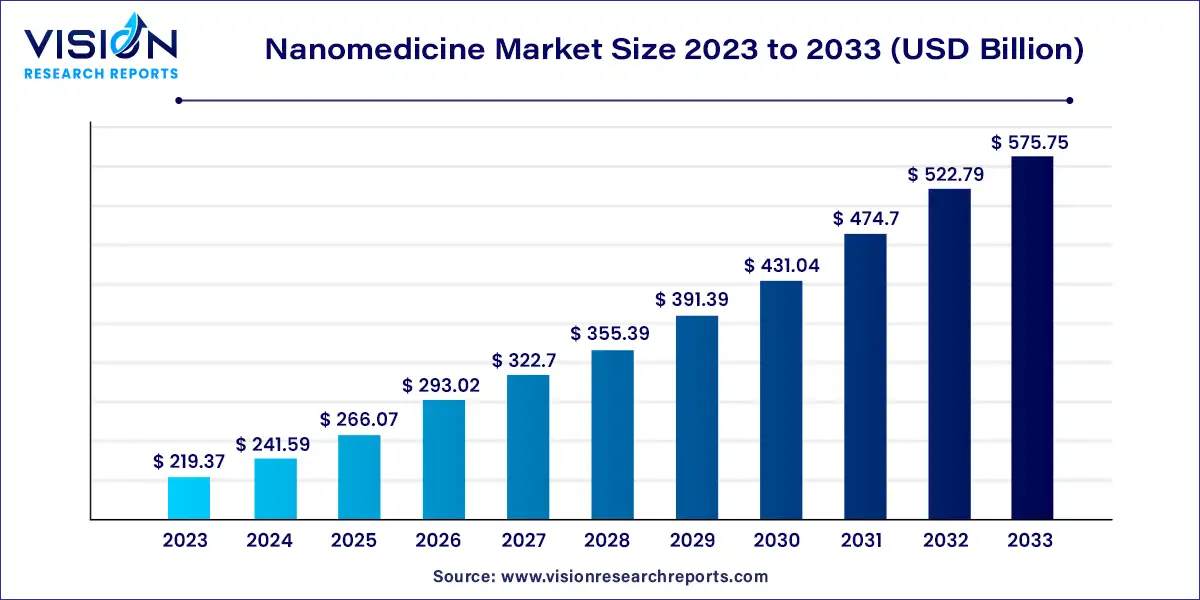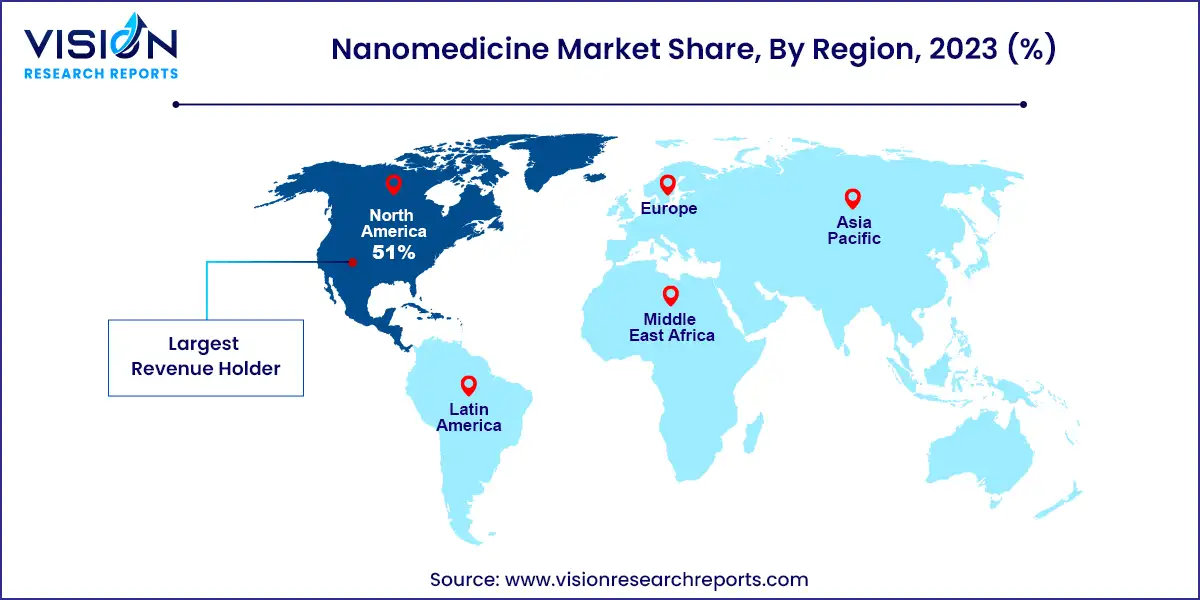The global nanomedicine market size was valued at USD 219.37 billion in 2023 and it is predicted to surpass around USD 575.75 billion by 2033 with a CAGR of 10.13% from 2024 to 2033. Nanomedicine represents a rapidly advancing sector within the broader pharmaceutical and biotechnology industries. By harnessing the unique properties of nanoscale materials, nanomedicine aims to enhance drug delivery, diagnostics, and therapeutic treatments. This market is expanding due to its potential to revolutionize healthcare by providing more targeted, efficient, and personalized medical solutions.

The growth of the nanomedicine market is driven by an increasing prevalence of chronic diseases such as cancer, cardiovascular disorders, and neurological conditions has intensified the demand for advanced medical treatments. Nanomedicine offers innovative solutions for these conditions through targeted drug delivery systems and personalized therapies, which improve treatment efficacy and reduce side effects. Additionally, advancements in nanotechnology have led to the development of sophisticated diagnostic tools, enabling earlier detection and more accurate disease monitoring. The expanding research and development activities in nanotechnology, coupled with significant investments from both private and public sectors, further fuel market growth. Moreover, the rising awareness and adoption of nanomedicine technologies in emerging economies contribute to the market's expansion, as these regions seek to improve healthcare outcomes and infrastructure.
North America dominated the global market with the largest market share of 51% in 2023, driven by technological advancements and their application in early disease diagnosis, prevention, and management of acute and chronic conditions. These factors are anticipated to continue propelling market growth in the U.S.
| Attribute | North America |
| Market Value | USD 111.87 Billion |
| Growth Rate | 10.14% CAGR |
| Projected Value | USD 293.63 Billion |
Conversely, the Asia-Pacific region is projected to experience the fastest growth during the forecast period. The surge in research and development in pharmaceuticals and diagnostics utilizing nanotechnology in this region is expected to significantly boost the nanomedicine market.

In 2023, the regenerative medicine segment was the largest in the nanomedicine market. This emerging field focuses on restoring normal function by replacing, engineering, or regenerating damaged or lost human cells, tissues, and organs due to age, disease, or congenital abnormalities.
Looking ahead, the diagnostic imaging segment is anticipated to grow at the fastest pace. Diagnostic imaging encompasses various techniques used to investigate the body, diagnose diseases and injuries, and monitor responses to treatments.
In 2023, cardiovascular diseases were the leading indication in the nanomedicine market. These conditions affect the heart and blood vessels and are influenced by risk factors such as high blood pressure, smoking, high cholesterol, poor diet, and obesity.
In contrast, the oncological diseases segment is expected to grow most rapidly in the coming years. Oncological diseases, primarily cancer, include various types such as breast, stomach, and lung cancer.
By Modality
By Application
By Indication
By Nanomolecule Type
By Region
 Cross-segment Market Size and Analysis for
Mentioned Segments
Cross-segment Market Size and Analysis for
Mentioned Segments
 Additional Company Profiles (Upto 5 With No Cost)
Additional Company Profiles (Upto 5 With No Cost)
 Additional Countries (Apart From Mentioned Countries)
Additional Countries (Apart From Mentioned Countries)
 Country/Region-specific Report
Country/Region-specific Report
 Go To Market Strategy
Go To Market Strategy
 Region Specific Market Dynamics
Region Specific Market Dynamics Region Level Market Share
Region Level Market Share Import Export Analysis
Import Export Analysis Production Analysis
Production Analysis Others
Others